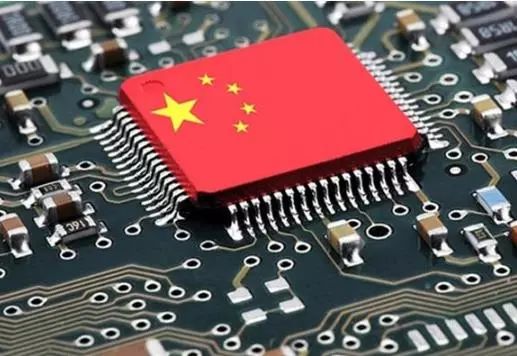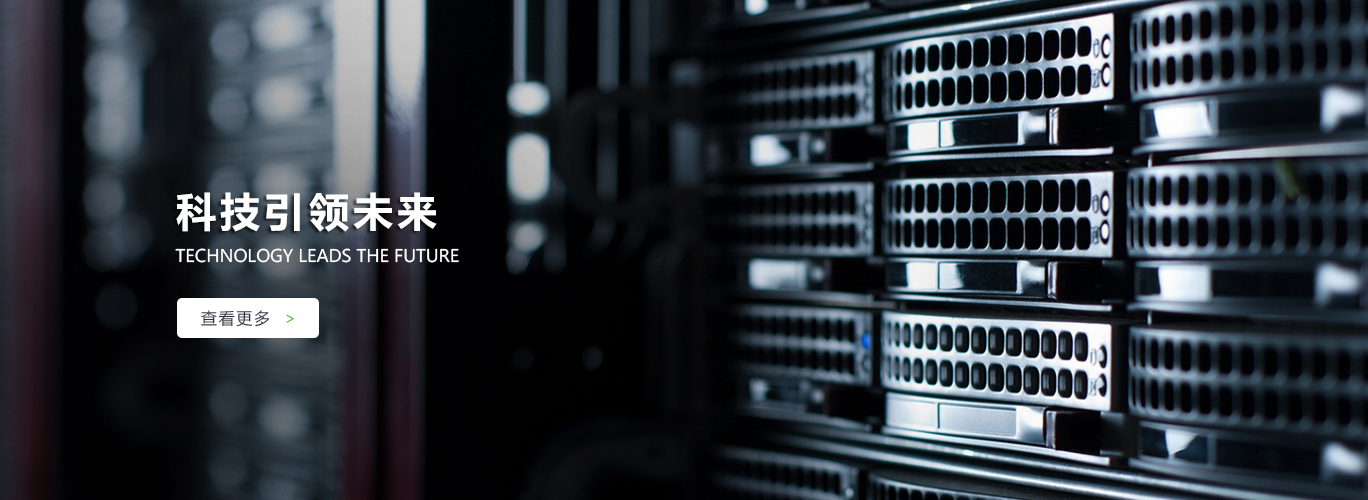新闻资讯
联系我们
名 称:苏州赛森电子科技有限公司
电 话:0512-58987901
传 真:0512-58987201
邮 箱:sales@cycas.com
地 址:江苏省张家港经济开发区福新路1202号 215600PRC
网 址:www.cycas.com
Name: Suzhou cycas Microelectronics Co., Ltd.
Tel.: 0512-58987901
Fax: 0512-58987201
Email: sales@cycas.com
Address: No.1202,Fuxin Road,Zhangjiagang Economic Development Zone,Jiangsu Province 215600PRC
Website: www.cycas.com
CCTV: Chinas micro and medium enterprises officially announced to master the 5nm etching machine technology!央视 : 中国中微正式宣布掌握5nm刻蚀机技术!
CCTV: Chinas micro and medium enterprises officially announced to master the 5nm etching machine technology!央视 : 中国中微正式宣布掌握5nm刻蚀机技术!
发布日期:2018-06-02 作者:www.cycas.com 点击:
不久前,央视报道了这样的一则消息,中微半导体设备公司将在今年年底正式敲定5nm刻蚀机!而刚刚发布的苹果A11芯片以及华为的麒麟970均是使用10nm工艺。
当所有的巨头还在为10nm,7nm技术大肆进军的时候,中国中微正式宣布掌握5nm技术,让对手措手不及,难以置信!原来一直在这一领域没有任何话语权的中国内地半导体企业能够弯道超车!
而在中微这个隐形的巨人背后,如今已年过七旬的尹志尧就是那个点燃星火的人。
在美国硅谷从事半导体行业20多年的尹志尧,曾任AppliedMaterials应用材料公司的副总裁。91年,尹志尧来到应用材料公司,负责同一领域的研究开发工作,先后获得了60多个美国和国外的zhuanli。尹志尧开发或参与开发的产品,现在在这个领域大概占了全世界的50%。另外,还帮助成立了硅谷中国工程师协会,并担任了头两任的主席。被誉为硅谷最有成就的华人之一。
13年前(2004年),当时已经60岁的尹志尧放弃了美国的百万年薪,带领三十多人的团队,冲破美国政府的层层审查(所有人都承诺不把美国的技术带回中国,包括所有工艺配方、设计图纸,一切从零开始),回国创办了中微半导体(以下简称中微),他要在芯片制造设备领域与国际巨头直接竞争,取得一席之地。
尹志尧带着30多人的团队回到中国,只因为一句话:「学成只为他日归来,报效祖国」。
一切从零开始,凭着过去20多年的经验和基础技术支持,尹志尧和他的团队很快就开发出了第一台国产的生产半导体芯片的设备--等离子体刻蚀机。
等离子体刻蚀机是在芯片上进行微观雕刻,刻出又细又深的接触孔或者线条,每个线条和深孔的加工精度是头发丝直径的几千分之一到上万分之一。
"在米粒上刻字的微雕技艺上,一般能刻200个字已经是极限,而我们的等离子刻蚀机在芯片上的加工工艺,相当于可以在米粒上刻10亿个字的水平。"尹志尧这样形容到。
一个16nm的微观逻辑器件有60多层微观结构,要经过1000多个工艺步骤,要攻克上万个技术细节才能加工出来。只看等离子体刻蚀这个关键步骤,它的加工尺度为普通人头发丝的五千分之一,加工的精度和重复性要达到五万分之一。

中微在刚刚涉足IC芯片介质刻蚀设备时,就推出了65nm等离子介质刻蚀机产品,随着技术的进步一直做到45nm、32nm、28nm等,现在16nm的蚀机产品已经在客户的生产线上运行了。
据了解,在过去9个多月时间里,中微的反应台交付量已突破400台;单反应台等离子体刻蚀设备已交付韩国领先的存储器制造商;双反应台介质刻蚀除胶一体机研制成功,这是业界首次将双反应台介质等离子体刻蚀和光刻胶除胶反应腔整合在同一个平台上。
或许正是由于中微在半导体设备领域的突飞猛进,也引来了两家国外竞争对手挑起的知识产权诉讼。不过,凭借过硬的自主技术zhuanli,中微接连获得的胜利。
2008年前后,正当中微公司自行开发12英寸芯片刻蚀机,准备进入国际一流芯片生产线时,两家国际巨头芯片设备公司找上门来。
2007年中微在美国被行业巨头应用材料公司起诉侵权,但却始终举证无力,中微则抓住机会适时反诉对方不正当竞争,应用材料公司显然对这一情况准备不足,最终不得不撤诉求和。
2009年另一巨头美国科林研发又在台湾起诉中微侵犯其发明zhuanli,由于中微半导体在前期已作了大量的知识产权预警分析和准备工作,所以,仅用不到一个月时间,公司就决定"以攻为守",向法院提交了大量证据,采用"釜底抽薪"的做法,主张科林公司两项zhuanli无效。同时,企业还向台湾智慧财产局主张科林公司的zhuanli无效。
2009年9月8日,台湾智慧财产法院一审判决科林公司zhuanli无效。中微半导体很快接到了台积电的订单。此后,中微半导体又在科林公司上诉的二审中获胜。在台湾智慧财产局的交锋中,中微半导体以充足的证据,使得科林公司的聚焦环配置zhuanli于2011年被宣布无效,密封环zhuanli也被宣布无效,扫除了产品进入台湾市场的知识产权障碍。
如今,中微正在开发5纳米芯片制造设备意欲打破德美垄断。这个技术要求芯片上的均匀度达到0.5纳米,相当于原子水平。目前世界上投入最先进的芯片是10纳米,而中国能够量产最新的芯片还在40纳米和28纳米,和国际最尖端的水平还差3代。在这个高度竞争的行业,谁能够在技术上领先,谁就能占领市场。
最先进的像英特尔、台积电、三星它们的14纳米已经成熟生产了,10纳米随着苹果A11和华为麒麟970芯片的上市,台积电率先进入到成熟量产期。
今年4月,尹志尧的中微半导体公司宣布,已经掌握5纳米技术,预计年底正式敲定5纳米刻蚀机。无独有偶,两周后,IBM也宣布掌握5纳米技术。因此,尹志尧这一宣布,意味着中微在核心技术上突破了外企垄断,中国半导体技术第一次占领至高点。
Not long ago, CCTV reported that China micro Semiconductor Equipment Co., Ltd. will officially finalize the 5nm etcher by the end of this year! The just released Apple a11 chip and Huawei's Kirin 970 are all using the 10nm process.
When all the giants are still marching for 10nm and 7Nm technologies, China ' 。
Yin Zhiyao, who has been engaged in semiconductor industry in Silicon Valley for more than 20 years, was the vice president of applied materials. In 1991, Yin Zhiyao came to the applied materials company to take charge of the research and development work in the same field, and successively obtained more than 60 US and foreign patents. The products that Yin Zhiyao developed or participated in now account for about 50% of the world's products in this field. In addition, he helped to establish the Silicon Valley China Engineers Association and served as the first two presidents. Known as one of the most successful Chinese in Silicon Valley. 13 years ago (in 2004), Yin Zhiyao, who was 60 years old at that time, gave up his million year salary in the United States, led a team of more than 30 people, broke through the level by level review of the U.S. government (everyone promised not to bring American technology back to China, including all process formulas, design drawings, all from scratch), returned to China and founded China micro semiconductor (hereinafter referred to as China micro), he wanted to lead in chip manufacturing equipment Domain competes directly with international giants to gain a place.
Yin Zhiyao returned to China with a team of more than 30 people because of one sentence: "learning is only for the return of the motherland in the future.".
From scratch, with over 20 years of experience and basic technical support, Yin Zhiyao and his team soon developed the first domestic device for semiconductor chip production plasma etcher.
The plasma etching machine is used to carve the contact holes or lines on the chip. The processing accuracy of each line and deep hole is one thousandth to one thousandth of the hair diameter.
"In the microcarving technology of lettering on rice grains, it's the limit to be able to carve 200 characters. The processing technology of our plasma etching machine on chip is equivalent to that of being able to carve 1 billion characters on rice grains. "Yin Zhiyao said so.
A 16nm micro logic device has 60 layers of microstructure. It needs more than more than 1000 process steps and tens of thousands of technical details to be processed. Only looking at the key step of plasma etching, its processing scale is one fifth of that of ordinary human hair, and its processing accuracy and repeatability should reach one fifth of that of ordinary human hair.
At the beginning of IC chip medium etching equipment, the company launched 65nm plasma medium etching machine products. With the progress of technology, it has been 45nm, 32nm, 28nm and so on. Now 16nm etching machine products have been running on the customer's production line.
It is understood that in the past nine months, the delivery volume of medium and micro reaction platforms has exceeded 400; the single reaction platform plasma etching equipment has been delivered to the leading memory manufacturer in South Korea; the development of double reaction platform media etching and degumming integrated machine has been successful, which is the first time in the industry to integrate the double reaction platform media plasma etching and photoresisting reaction cavity on the same platform.
Perhaps it is because of the rapid development of China and micro enterprises in the field of semiconductor equipment that the intellectual property litigation initiated by two foreign competitors has also attracted. However, with excellent independent technology patents, China and micro enterprises have won successive victories.
Around 2008, when Zhengzhong micro company developed its own 12 inch chip etcher and was ready to enter the world-class chip production line, two international giant chip equipment companies came to visit.
In 2007, Zhongwei was sued for infringement by the industry giant applied materials company in the United States, but the evidence was still weak. Zhongwei seized the opportunity to counterclaim against the other party's unfair competition in time. The applied materials company obviously had insufficient preparation for this situation, and finally had to withdraw the claim for sum. In 2009, another giant, Colin R & D of the United States, sued in Taiwan for micro infringement of its invention patents. As a result of the early warning analysis and preparation of intellectual property rights of micro and medium-sized semiconductors, within less than a month, the company decided to "take offense as guard", submitted a lot of evidence to the court, and adopted the "bottom-up" approach, claiming that two patents of Colin were invalid 。 At the same time, the enterprise also claims to Taiwan intellectual property bureau that the patent of Colin company is invalid.
On September 8, 2009, the first trial of Taiwan intellectual property court ruled that the patent of Colin company was invalid. Meso and micro semiconductors soon received orders from TSMC. Since then, the company has won the second instance of the appeal. In the confrontation between Taiwan's Intellectual Property Office, with sufficient evidence, the focus ring configuration patent of Colin was declared invalid in 2011, and the seal ring patent was also declared invalid, removing the intellectual property barriers for products to enter the Taiwan market.
Now, the company is developing five nanometer chip manufacturing equipment to break the German American monopoly. This technology requires the uniformity of the chip to reach 0.5 nm, equivalent to the atomic level. At present, the most advanced chip in the world is 10 nanometers, while the latest chips that can be mass produced in China are still 40 nanometers and 28 nanometers, which is 3 generations lower than the most advanced level in the world. In this highly competitive industry, whoever can lead in technology can occupy the market.
The most advanced 14 nm products such as Intel, TSMC and Samsung have been produced. With the listing of Apple a11 and Huawei Qilin 970 chips, TSMC is the first to enter the mature production period.
In April this year, Yin Zhiyao's China micro semiconductor company announced that it has mastered 5-nanometer technology and is expected to officially finalize the 5-nanometer etching machine by the end of the year. Coincidentally, two weeks later, IBM also announced its mastery of 5 nanotechnology. Therefore, Yin Zhiyao's announcement means that China and micro have broken through the monopoly of foreign enterprises in core technology, and China's semiconductor technology has occupied the highest point for the first time.
本文网址:http://www.cycas.com/news/396.html
相关标签:等离子刻蚀机
最近浏览:
相关产品:
相关新闻:
- A complete set of equipment for surface modification, surface activation, etching and nano coating of plasma cleaning machine等离子体清洗机表面改性、表面活化、刻蚀、纳米涂层一台设备全搞定 A complete set of equipment for surface modification, surface activation, etching and nano coating
- 真空等离子清洗产品特点Characteristics of vacuum plasma cleaning products
- 真空等离子清洗原理Principle of vacuum plasma cleaning
- 等离子清洗机效果如何评估 How to evaluate the effect of plasma cleaning machine?
- A complete set of equipment for surface modification, surface activation, etching and nano coating of plasma cleaning machine等离子体清洗机表面改性、表面活化、刻蚀、纳米涂层一台设备全搞定
- 等离子体表面处理的原理Principle of plasma surface treatment
- 怎么选等离子清洗机设备厂商呢?How to choose plasma cleaning equipment manufacturers?
- 等离子体表面处理的技术及应用Technology and application of plasma surface treatment
- 等离子清洗机在手机行业中的应用Application of plasma cleaning machine in mobile phone industry
- 等离子表面处理技术也具有以下优势Plasma surface treatment technology also has the following advantages

